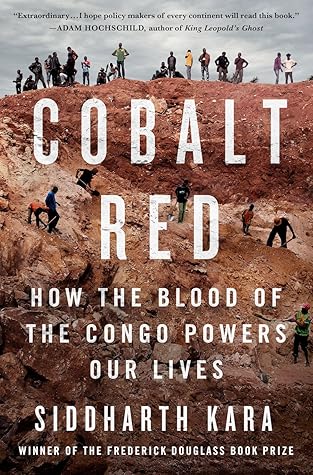More on this book
Community
Kindle Notes & Highlights
Read between
March 13 - March 22, 2024
The Katanga region in the southeastern corner of the Congo holds more reserves of cobalt than the rest of the planet combined.
The Congolese military and other security forces are omnipresent in mining areas, making access to mining sites dangerous and at times impossible.
There is no known deposit of cobalt-containing ore anywhere in the world that is larger, more accessible, and higher grade than the cobalt under Kolwezi.
it is always raining somewhere in the Congo, and the country has the highest frequency of thunderstorms in the world.
Although it would seem advantageous for the DRC to refine cobalt to commercial-grade form and control more of the value chain, a senior official at Gécamines explained, “In Congo, we do not have sufficient electricity capacity to refine cobalt.”
Cobalt is toxic to touch and breathe, but that is not the biggest worry that the artisanal miners have. The ore often contains traces of radioactive uranium.
Contamination by heavy metals of the local population and the food supply was causing a range of negative health consequences across the Copper Belt. For instance, Germain had recently documented a high rate of birth defects in mining communities, such as holoprosencephaly, agnathia otocephaly, stillbirth, miscarriages, and low birth weight.
“The mama says the lake is poison,” he reported. “She said, ‘It kills the babies inside us. Mosquitoes do not drink the blood of the people who work here.’”
In China, not even a bribe can work unless you are in the elite circles. Here, money makes you elite. That is why so many Chinese come to Africa.


